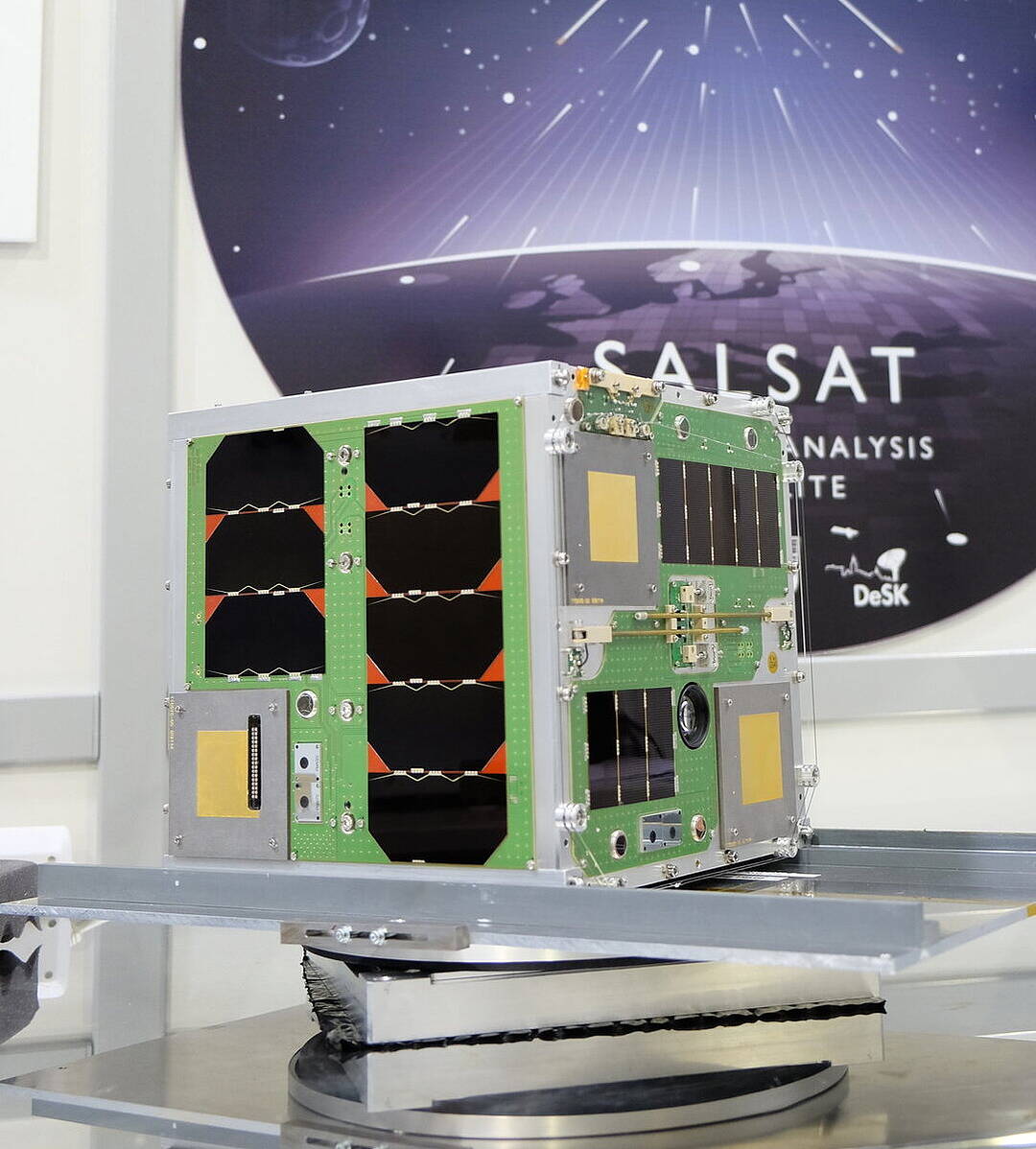Press release | 29 September 2020 | ag
TU Berlin satellite transmits signals for sustainable use of radio frequencies
Researchers aim to contribute to the future of satellite communication by providing freely accessible satellite data
After a two-year period of intensive development, a Soyuz rocket carrying a satellite developed by the Chair of Space Technology at TU Berlin was successfully launched from the Plesetsk spaceport in north-west Russia on 28 September 2020 at 13:20 Central European Time. SALSAT (Spectrum AnaLysis SATellite) became the 22nd small satellite developed, constructed and launched into space by scientists and students at TU Berlin. TU Berlin is one of the leading universities in the world in this area, particularly regarding the miniaturizing of space technology. A first: The data provided by SALSAT are to be made available to other research projects to promote a more sustainable use of radio frequencies.
The radio spectrum is a limited resource
The number of satellites launched in the context of civil space programs has increased in recent years. And this trend is set to continue. The most recent examples are what are known as mega constellations consisting of hundreds or even thousands of small satellites intended primarily to achieve global Internet access, such as SpaceX’s Starlink or Amazon’s Project Kuiper. Simultaneous communication with these and all other orbiting satellites requires a range of different radio frequencies. The problem is, however, that the radio spectrum is a limited resource. This is where the SALSAT nanosatellite mission comes in. “The challenge lies in the fact that the communication spectrum is very limited and has to be shared by all users. There is also the issue of sustainability, of improving and increasing the usability of this spectrum,” says Jens Großhans, project leader of SALSAT.
![03 Feinschnitt Teil 01 Copy 01.00_00_27_06.Still002 [Translate to English:] SALSAT Thumbnail](https://www.static.tu.berlin/fileadmin/www/_processed_/2/4/csm_03_Feinschnitt_Teil_01_Copy_01.00_00_27_06.Still002_bd54c28b31.png) © Tobias Rosenberg
© Tobias Rosenberg
Please note: Once you watch the video, data will be transmitted to YouTube/Google. For more information, see Google Privacy.
The spectrum analyzer will be placed on board the nanosatellite to analyze the global utilization of VHF, UHF and S band frequencies. These frequency ranges are primarily used in amateur radio as well as for scientific satellite missions. The project will look to explore possibilities and worldwide locations for the multiple use of existing frequencies.
“A carrier in Europe who is already using a frequency can pass this frequency on to a carrier in Australia, who will then also be able to use it without either party experiencing interference,” explains Großhans. “This is only possible using a reliable data base and this is what SALSAT can provide.” A further goal is to detect and locate interference and disruptions within the bands.
In addition to the spectrum analyzer, the satellite will also be carrying and testing out a fluid-dynamic actuator for the first time. A metallic fluid enables the position of the satellite to be changed without experiencing mechanical wear. The SALSAT team also focuses on sustainability when equipping satellites. “We are looking to bring together innovative technologies from a wide range of areas in order to be able to conduct as many experiments as possible.”
The satellite will pass over Berlin twice a day at around 13:15 and 1:15

The satellite launch finally proved successful when SALSAT passed over TU Berlin mission control center in Berlin-Charlottenburg and transmitted the first data in the night of 29 September 2020. “It is alway an exciting moment when we get to listen to the first signals in our satellite ground station on the roof of our institute and view and analyze the data on our screens in the control center,” Großhans explains. The satellite is orbiting at an altitude of approximately 575 kilometers and will pass over Berlin twice a day at around 13:11 and 1:11. Scientific operations will end after about two years. Thereafter, the satellite can be used for experiments and training purposes.
Funding for the project
On the basis of a resolution of the German Federal Bundestag, funding for the project is provided by the Federal Ministry for Economic Affairs and Energy via the department of satellite communication at the German Aerospace Center (DLR).
Kontakt
| Organization name | Chair of Space Technology |
|---|
